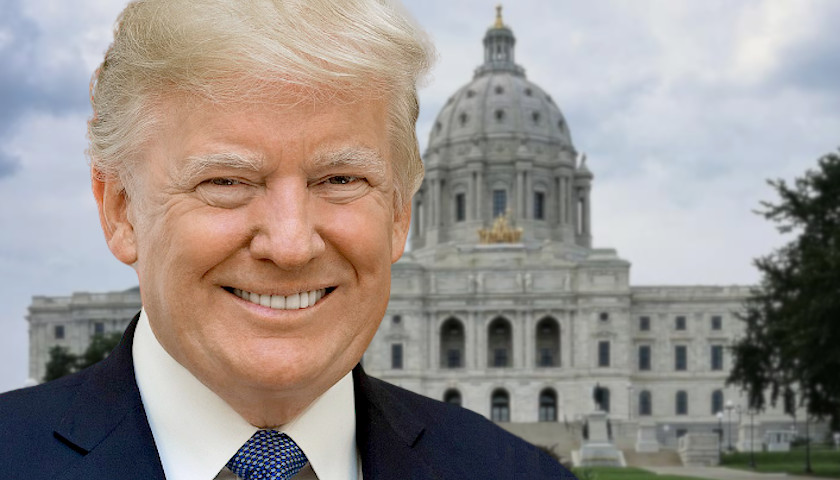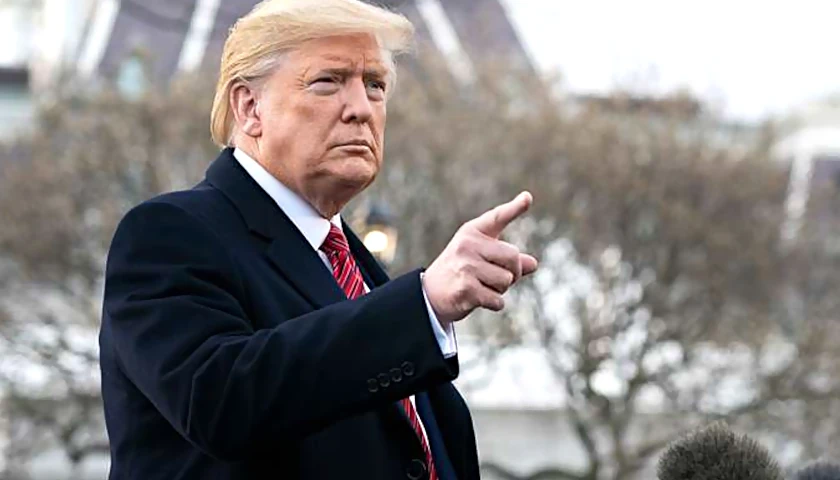by Robert Stacy McCain
How bad do things look for Joe Biden’s campaign right now? Consider this: Democrats are worried about Minnesota, a state no Republican presidential candidate has carried since Richard Nixon’s 1972 landslide. Yet polls show President Trump gaining ground in Minnesota, and Democrats are worried because they haven’t seen any appearances by Biden or his running mate Kamala Harris. “Why aren’t they here?” one Democratic-Farmer-Labor (DFL) Party official told Minnesota Public Radio last week. “We need to hear from them. We need to see their presence on the ground.”
Biden’s peril in Minnesota is in many ways emblematic of everything that’s gone wrong for Democrats in this campaign. While the Real Clear Politics average of Minnesota polls still shows Biden leading Trump by more than five points, a poll by Emerson College earlier this month had Trump within three points, and a poll by the GOP-affiliated Trafalgar Group two weeks ago showed a tie in Minnesota. How could a state that twice gave majorities to Barack Obama, a state that not even Ronald Reagan could win in his 1984 landslide, be in play for Trump this year? Well, in a word, riots.
When the death of George Floyd touched off what the mainstream media prefer to call “mostly peaceful protests” three months ago, Biden and other Democrats did not seem to recognize the potential danger these riots posed to their chances in November. Eager to “energize” their party’s support among black voters, Biden’s campaign embraced the #BlackLivesMatter (BLM) movement, even contributing money to a fund that bailed Minnesota rioters out of jail:
The Minnesota Freedom Fund (MFF) received $35 million in donations in the wake of the police killing of George Floyd, with many of those donations intended to help protesters who were jailed during the demonstrations and riots in May….
Among those bailed out by the Minnesota Freedom Fund (MFF) is a suspect who shot at police, a woman accused of killing a friend, and a twice convicted sex offender …
According to attempted murder charges, Jaleel Stallings shot at members of a SWAT Team during the riots in May. Police recovered a modified pistol that looks like an AK-47. MFF paid $75,000 in cash to get Stallings out of jail.
Darnika Floyd is charged with second degree murder, for stabbing a friend to death. MFF paid $100,000 cash for her release.
Christopher Boswell, a twice convicted rapist, is currently charged with kidnapping, assault, and sexual assault in two separate cases. MFF paid $350,00 in cash for his release.
At least 13 members of Biden’s campaign staff contributed to the fund that bailed out those criminals, and Biden’s campaign spokesman told Reuters that the Democratic candidate opposes requiring cash bail as a “modern day debtors prison.” By endorsing this “turn-’em-loose” policy for criminals, the Democrats have endangered public safety, especially including the safety of the black community. Apparently, Biden’s campaign believes that such policy stances are necessary to “energize” the black vote, and thus avoid the fate of Hillary Clinton.
What seems to be involved here is a dubious bit of conventional wisdom among Democratic Party strategists who, in the wake of Trump’s 2016 victory, looked at exit polls and other data and reached the conclusion that Clinton lost because of low turnout among African-American voters. Therefore, Democrats apparently concluded, what they needed to do was to foment a sense of crisis in the black community, with Joe Biden riding in as the hero to rescue them from the racist menace of Trump. This cynical calculation explains why Democrats and their media allies turned Floyd’s death in Minneapolis into an international cause célèbre, the occasion for endless lectures about the evils of “systemic racism,” etc.
Without going into an in-depth critique of this Democratic strategy (except to say that Hillary’s unpopularity transcended racial lines), the important point to make is that a belief in the need to “energize” black voters explains why Biden’s campaign overlooked the potential for a backlash against the hateful rhetoric and criminal violence of the #BlackLivesMatter movement. It is this backlash that has made it increasingly possible that Trump can win Minnesota.
Long before BLM unleashed three nights of vandalism, looting, and arson in Minneapolis in late May, the Trump campaign had considered Minnesota a potential swing state for 2020. A look at the map and the 2016 election results explains why. Trump won every state that borders Minnesota — Wisconsin to the east, Iowa to the south, North Dakota and South Dakota to the west. Furthermore, Clinton got only a 46.4 percent plurality in Minnesota, edging Trump there by a margin of about 45,000 votes. All Trump needed, to add Minnesota to his Electoral College majority was to boost his share of the same working-class white voters who had swung the neighboring Midwestern states into his column in 2016.
The linchpin of Trump’s appeal to Minnesota is jobs. Trump reversed Obama-era environmental policies that had damaged the state’s economy, and his tariffs on Chinese steel imports helped revive Minnesota’s mining industry. Last fall, Trump traveled to Duluth where he declared, “The Iron Range is back in business.” This appeal even shook the Democratic stranglehold on Minnesota’s strong labor-union movement, with one local mine union president telling a reporter in March, “I’ve voted Democrat my whole life. It’s getting tougher.”
That explains why, immediately after last week’s Republican National Convention, Vice President Mike Pence flew to Duluth for a campaign event. “The president stood up to Chinese steel dumping,” Pence told the enthusiastic crowd, which interrupted his speech with several standing ovations. The event featured six Democratic mayors of Iron Range towns who have endorsed Trump for reelection. Also in the crowd at the Pence event was a former Democratic mayor of Duluth who’s now supporting Trump. “My dad was the head of the Teamsters and the things he fought for — jobs, benefits and working men and women — the Democratic party has lost that,” Gary Doty said. “They’ve gone so far left I can’t support the Democratic ticket this year.”
Pence’s speech in Duluth also emphasized the law-and-order theme, praising “the best people” in law enforcement: “There’s no excuse for what happened to George Floyd in Minneapolis and justice will be served. There’s also no excuse for the rioting and looting and violence that followed.” For many weeks after the violent “unrest” that followed Floyd’s death, the Biden campaign embraced the #BlackLivesMatter rhetoric of blaming “systemic racism,” ignoring critics who pointed out that BLM’s organizers had boasted of being “trained Marxists” (see Paul Kengor, “How Marxists Exploit Race,” June 22). After three months of tacitly endorsing riots, however, the Biden campaign suddenly last week shifted gears, strongly condemning mob violence, evidently because Democrats’ own internal polling showed Trump was gaining traction on the law-and-order issue.
Biden’s attempt to shift his stance on BLM may prove to be too little, too late to rescue his campaign in Minnesota. It is a state that has long prided itself on racial equality, as I pointed out in June (“Logic, Rhetoric, and Race”). No one who knows much about Minnesotans could imagine that they would tolerate “systemic racism.” By endorsing the BLM “unrest” that wrecked Minneapolis, however, Democrats and their media enablers have in effect accused Minnesotans of complicity in depriving black people of their civil rights.
The people of Minnesota will soon have a chance to avenge that insulting accusation. We are still nine weeks away from Election Day, polls are an unreliable indicator, and almost anything might happen between now and November 3, but right now Democrats are worried, and they should be. If Biden loses Minnesota, it could prove the bellwether of a landslide victory for Trump.
– – –
Robert Stacy McCain is the author of Sex Trouble: Essays on Radical Feminism and the War Against Human Nature. He blogs at TheOtherMcCain.com.




